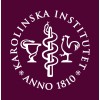
Cardiac Changes Associated With Acute Cerebro-vascular Stroke
Cerebrovascular AccidentCardiovascular disease is regarded as main predisposing risk factor for cerebrovascular stroke. Cardiac dysfunction can both worsen the pre existing cerebral damage and cause new brain injury Diseases of the heart and the brain are closely entangled. Vascular diseases of both organs share the same risk factors.

Neural Bases of Post-stroke Emotion Perception Disorders
StrokeStroke Sequelae1 moreThis monocentric physiological study will evaluate the neural bases of visual recognition of emotions in stroke patients vs. healthy controls using MRI (functional and structural connectivity) and EEG.

Variability of Healthy People and People After Stroke Results in the Box and Block Test
Motor ActivityMain aim of the study is to find out how many attempts of each subtest in the Box and Block Test should be done in clinical practice during testing people after stroke who are 20-64 years old.

A Study to Estimate How Often Post-stroke Spasticity Occurs and to Provide a Standard Guideline...
Spasticity as Sequela of StrokeThis study will monitor patients during the first year following their stroke. Stroke is a very serious condition where there is a sudden interruption of blood flow in the brain. The main aim of the study will be to find out how many of those who experience their first-ever stroke then go on to develop spasticity that would benefit from treatment with medication. Spasticity is a common post-stroke condition that causes stiff or ridged muscles. The results of this study will provide a standard guideline on the best way to monitor the development of post-stroke spasticity.

Umbilical Cord Blood in the Treatment of Stroke in Children.
Arterial Ischemic Stroke (AIS) in ChildrenThe specific aims of this study are: To determine if Human Umbilical Cord Blood (hUCB) infusion is safe in children with perinatal arterial ischemic stroke (AIS). To determine if late functional outcome, physiologic response, and anatomic findings are changed following hUCB infusion in children with perinatal AIS.

Study for the Use of Alteplase in Patients Who Awaken With Stroke
Ischemic StrokeThis is a pilot study of thrombolytic therapy in patients with ischemic stroke who present with stroke symptoms upon awakening.

Patient Experiences on the Stroke Unit
Ischemic StrokeIn this study we want to develop and validate a PREM for patient with ischemic stroke.

VNS-REHAB At-Home - Post-Market Study for Using the Vivistim System® at Home
Ischemic StrokeUpper Extremity ProblemThis is a single-arm post-market study of up to 150 participants, using up to 50 mobile therapists to conduct up to 36-hours at-home therapy. The study will assess at-home therapy implementation instead of an in-clinic therapy implementation for patients who are commercially implanted with the Vivistim System. Patients will be consented for eligibility if appropriate to be implanted with the Vivistim System per the indications for use (The MicroTransponder® Vivistim® Paired VNS™ System is intended to be used to stimulate the vagus nerve during rehabilitation therapy in order to reduce upper extremity motor deficits and improve motor function in chronic ischemic stroke patients with moderate to severe arm impairment.). Study participation includes receiving rehabilitation therapy paired with VNS, provided at the patient's home by a therapist, along with self-activated VNS. All subjects will be commercially implanted with the Vivistim System® after an ischemic stroke prior to Study treatment, although they may be consented prior to implant. It should be noted that the implant surgery is not part of the study.

The Reliability and Validity of the Figure of 8 Walk Test and Double Task Figure of 8 Walk Test...
StrokeThe validity of the dual-task F8W test in predicting falls in older adults has been confirmed. As far as we know, there are no studies evaluating the validity and reliability of the dual-task F8W test in stroke patients. Therefore, the aim of the study is to evaluate the validity and reliability of the F8W and dual-task F8W test in stroke patients.

Prevention and Rehabilitation of Stroke in Uganda
StrokeStroke is increasing in low-income countries in Africa, and knowledge is lacking on risk factors and how to prevent stroke as well as how to best use the resources for rehabilitation after stroke which are very limited. Knowledge generation within this area is therefore urgently needed. This collaboration between the research group HELD (Health and Everyday Life among people with neurological Disorders), Karolinska Institutet (KI) and the research surveillant site Africa Medical and Behavioral Sciences Organization (AMBSO) population health surveillance (PHS), will create substantial research opportunities to develop and improve prevention and rehabilitation for stroke, which is in line with the sustainable development goals to reduce the prevalence and mortality rates due to NCDs. AMBSO is collecting data from 17 000 households on many potential risk factors for stroke. Questions about stroke primary and secondary prevention of stroke and impact of stroke or need of rehabilitation could be added to the existing questionnaires such as the validated Ugandan version of the Stroke Impact Scale. This is intended to fulfill the aim of the network which is to increase the knowledge of occurrence and consequences of NCDs with a specific focus on stroke, which will be valuable for the development of preventive healthcare policy documents and guidelines for appropriate prevention strategies and rehabilitation interventions. Research questions in relation to NCDs with focus on stroke prevention and rehabilitation: How many cases (prevalence) are reported in the targeted study sites and what is the mortality rate (incidence) that can specifically relate to stroke? How does stroke and other NCDs affect and impact the quality of life for persons living in Uganda? Which factors impact the recovery process after stroke? What sort of rehabilitation is needed in the study areas for persons affected by stroke? In addition, risk factors of stroke such as diabetes and hypertension will be mapped.
